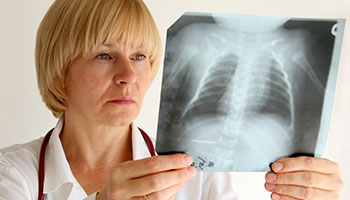Key points
- Haemophilus influenzae can cause infections ranging from minor to serious, even deadly.
- Chemoprophylaxis and vaccination are recommended to prevent one type of H. influenzae disease — type b or Hib.
- While other H. influenzae disease are uncommon, they've been increasing in recent years.
- Stay up to date on diagnosis, treatment, and prevention recommendations.

Cause

H. influenzae are gram-negative bacteria. They can be encapsulated (typeable) or unencapsulated (nontypeable). The 6 encapsulated serotypes are designated a through f (e.g., Hia, Hib).
Types
H. influenzae infections can affect many organ systems.
Typeable H. influenzae
The most common types of infections caused by typeable H. influenzae, including Hib, include:
- Pneumonia
- Bacteremia
- Meningitis
- Epiglottitis
- Septic arthritis
- Cellulitis
- Otitis media
- Purulent pericarditis
Less common infections include endocarditis and osteomyelitis.
Nontypeable H. influenzae
Nontypeable H. influenzae commonly cause acute otitis media and sinusitis episodes in children. They commonly cause bronchitis in adults.
Nontypeable H. influenzae can also cause invasive disease in people of all ages.
Risk factors
The following groups are at increased risk of invasive H. influenzae disease:
- Children younger than 5 years of age
- Adults 65 years or older
- American Indian and Alaska Native people
Certain medical conditions can also increase someone's risk of H. influenzae disease:
- Asplenia
- HIV infection
- Immunoglobulin and complement component deficiencies
- Malignant neoplasms requiring hematopoietic stem cell transplantation, chemotherapy, or radiation therapy
- Sickle cell disease
Hib disease specifically
The following groups are at increased risk of Hib disease:
- Daycare classmates of someone with Hib disease
- Household contacts of someone with Hib disease
- Unimmunized and underimmunized children younger than 5 years old
How it spreads
Transmission usually occurs when someone breathes in or has direct contact with respiratory droplets containing the bacteria. Like symptomatic people, nasopharyngeal carriers can spread the bacteria by coughing and sneezing.
Neonates can acquire infection by aspiration of infected amniotic fluid or through contact with genital tract secretions containing the bacteria.
Prevention
Chemoprophylaxis
CDC recommends chemoprophylaxis for close contacts of Hib cases. CDC doesn't have similar guidelines for other types of H. influenzae disease.
Vaccination
Hib vaccine is a routine U.S. childhood vaccination.
There are no vaccines for non-b or nontypeable H. influenzae disease.
Diagnosis
Diagnosis of invasive disease caused by H. influenzae is based on clinical presentation and laboratory tests. These tests can include culture and nucleic acid amplification by a validated assay (e.g., polymerase chain reaction [PCR]).
Complications
Between 3% to 6% of Hib cases in children are fatal.
People 65 years or older with invasive H. influenzae disease have higher case-fatality ratios than children.
Up to 20% of patients who survive Hib meningitis have permanent hearing loss or other long-term neurological sequelae.
Trends and surveillance
Hib disease is no longer common.
Invasive H. influenzae disease is a reportable condition in the United States.
- Oliver SE, Rubis AB, Soeters HM, et al. Secondary cases of invasive disease caused by encapsulated and nontypable Haemophilus influenzae — 10 U.S. jurisdictions, 2011–2018. MMWR Morb Mortal Wkly Rep. 2023;72(15):386–90.
- Blain A, MacNeil, J, Wang X, et al. Invasive Haemophilus influenzae disease in adults ≥65 years, United States, 2011. Open Forum Infect Dis. 2014;1(2): ofu044.
